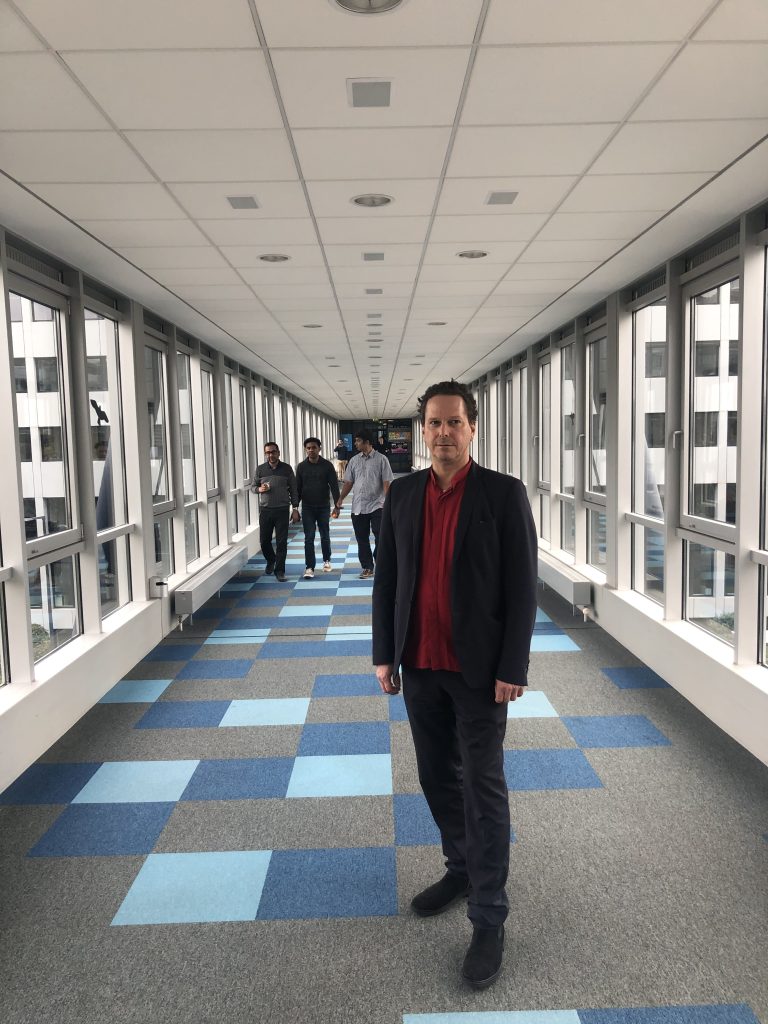Building Bridges
The Bridge is one of the main passageways connecting two building complexes on the Walldorf campus and it is host to the interactive music piece Building Bridges, composed and developed by Vienna based composer Rupert Huber. Translating the movements of the pedestrians through a compositional algorithm, the Bridge serves as stage and instrument at the same time. Every person is tracked by Ars Electroncia Futurelab’s cus-tom Pharus laser tracking system. This system can read the peoples movements and consecutively triggers the playback of tones. Each of the 48 individual tones is assigned to one of the speakers which are evenly distributed in the ceiling of the 60 meter long passageway, summing up to 96 tones for both walking direc-tions. This linear arrangement of evenly distributed sound sources in the space renders an always unique composition created by the madding crowd. 48 meeting sounds, which are audible to when and where on-coming people meet, additionally reinforce activities on the Bridge. The sounds are based on classic instru-ments, such as Piano, Horn, Flute, Viola and Contrabass — played by SAP employees who are part of the unof-ficial SAP Orchestra — that were recorded and tuned. To achieve optimal architectural sonification Rupert Huber has chosen to use sounds of the overtone series, and to sort them by their frequency intervals to achieve a harmonic, proportional music. Building Bridges was initiated to underline a statement formulated by SAP CEO Bill McDermott and former co-CEO Jim Hagemann Snabe and shall remind employees of “[…] building bridges rather than silos”. Just as the company’s products, the installation’s unique momentous com-position is the product of each and everybody’s contribution to a bigger whole. Accompanying walkers on their way through the highly frequented passageway, Building Bridges instantly allows subtly and at the same time steadily interaction with the instrument. Located in the bridgeheads, a live visualisation of the crowd and the current composition’s score serves as informative conclusion and uncovers the logic behind it. Addi-tionally, a room in one of the break-time areas hosts a visualisation screen as well as a down mix of the 48 channels on five speakers. Due to its success and SAP’s global operations, Building Bridges is planned to be extended with new sound sets from all over the world. Furthermore, a CD and a stereo audio stream are projected.
Text: Peter Freudling
